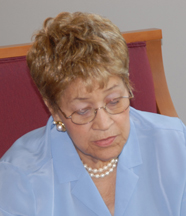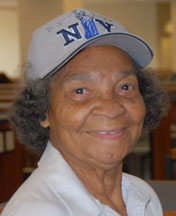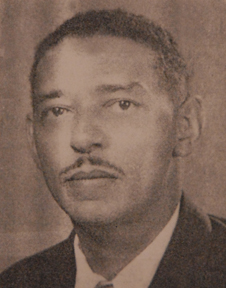

Teacher Development and Teacher Training “Teachers are not only helping children to meet their academic needs |
||||||||||||||||||||
|
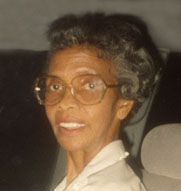 Mattie Wilkerson |
|||||||||||||||||||
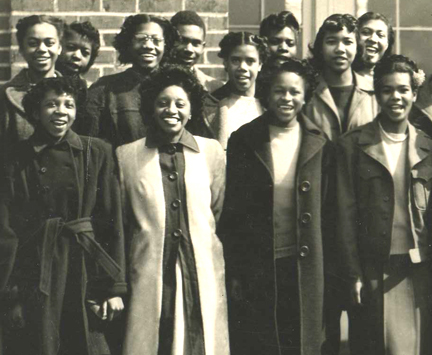 “Although there was a constant flow of cadet teachers, they were all professional. And an observant teacher was always in the background, later drawing upon what we were learning and discussing.” Isabel Berry |
||||||||||||||||||||
Among the Secondary School Study participants, D. Webster Davis School conceived of themselves as both an experimental school and a laboratory site for the training of teachers. While other schools served as locations for field work and student teaching—Fisk University placed students at Pearl High School and Hampton University placed students at Huntington High School—D. Webster Davis represented a setting to experiment with new forms of pedagogy. The term "laboratory school" and "university school" become misleading during the 1930s and 1940s as many such settings provided a convenience for teacher supervisors so that they would not have to visit many field sites. In contrast, D. Webster Davis School (and Southern Demonstration School, Drewry Practice School, Lincoln High School, and Alabama State Teachers College Laboratory School) were true experimental venues so that education students could watch outstanding veteran educators teach in a natural setting. This is a sharp contrast to the many lab schools of the 1940s and 1950s that served as a central location for the field placement of student teachers and, rather than being engaged in experimental work, offered a convienent setting for university supervisors who could observe students at a central location. |
||||||||||||||||||||
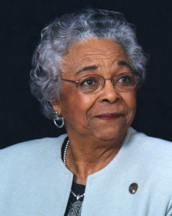 Laureta Matthews |
“The cadet teachers were not really the same as traditional student teachers. For the first six weeks, they would sit in the back and observe. The lab school teachers would gradually incorporate the cadets into the classroom and discuss instructional styles and goals. It was a very special type of teaching. They all drew connections among the subjects. The math and sciences teachers allowed those integrated aspects to emerge.” Laureta Matthews | |||||||||||||||||||
| “As a cadet teacher during the time of the Secondary School Study, I had the privilege to work with genuine teachers who taught young people how to become professionals and how to teach. The cadet teachers were carefully selected—top in our class to be able to teach in this laboratory setting. We all were being well trained—and we were being prepared to enter a segregated society. Webster Davis teachers were, in their own way, developing in us a sense of black pride and a readiness to face society.” Clarence A. Butcher | 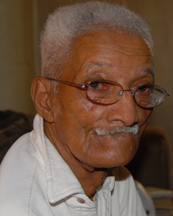 Clarence A. Butcher |
|||||||||||||||||||
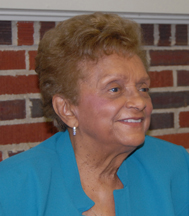 Dorothy T. Burhanan |
“In my English class, there were three cadet teachers along with the lead teacher (and, later, I was a cadet teacher at D. Webster Davis). The teaching was first rate and the cadet teachers were always being guided by the teacher. As students, we had great respect for all of the teachers.” Dorothy T. Burhanan |
|||||||||||||||||||
from Secondary School Study documents: “Definite changes have taken place in the relationship between teachers and pupils, the trend being in the direction of democratic leadership on the part of teachers. Such leadership has resulted in more satisfying experiences for more pupils. In the subject areas teachers are becoming more skillful in exploring problem situations and areas of interest with pupils, rather than for pupils.
|
||||||||||||||||||||
“Mrs. Brooks was a very creative teacher and was always engaged |
||||||||||||||||||||
“The teachers cared about us and cared that we learned. They knew that they were teaching us and displaying how students should be taught to a generation of future teachers.” Viola Bouldin Maniego |
|
|||||||||||||||||||
"Mrs. Dannie V. Townes taught history and was one of the most dramatic and most influential teachers. She never used a textbook; Mrs. Townes walked the classroom and the power of her words would engage us all. She was stern but never feared; everyone loved her. She taught history and taught some black history from Carter G. Woodson’s book. Her knowledge was so commanding and powerful; she inspired us." Laureta Matthews
|
||||||||||||||||||||
|
||||||||||||||||||||
"The enthusiasm of the teachers and practice teachers in this school as well as their clearly defined concerns in the area of evaluation gives evidence of considerable growth in the last few years . . . . Mrs. Brooks discussed plans for establishing a more consistent program for practice teaching throughout the school based on the problems which beginning teachers face in their attempts to bring about growth in pupils. We felt that the program ought to indicate how a practice teacher could discover and use a variety of effective techniques in stimulating pupils to achieve definite growth which seem important and worthwhile to both teacher and pupil. Mrs. Brooks agreed to experiment with such a program and to share the results of this experimentation with the whole staff." |
||||||||||||||||||||

an institutional member of the International Coalition of Sites of Conscience
Museumofed@gmail.com


